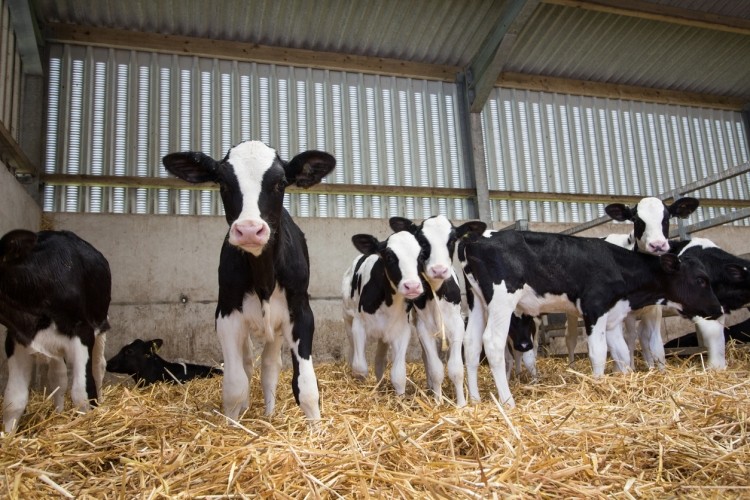USDA grant funds project exploring nutrient restriction in cows, calves

The $481,000 grant was one of a series recently announced by the US Department of Agriculture (USDA) through the National Institute of Food and Agriculture (NIFA). The project is set to run for several years.
The idea behind the research project stemmed from questions raised through work on a cow-calf operation, said Allison Meyer, assistant professor of ruminant nutrition and nutritional physiology at the University of Missouri. “One of the things that was most interesting was wondering why some [calves] had greater birth weight and why some were more vigorous and some were more healthy,” she added.
“We, in many different production systems, may have cows in late pregnancy or heifers that are nutrient restricted,” she told FeedNavigator. “That’s where all this came from.”
The project seeks to identify how nutrient restriction in a cow alters nutrient availability for the calf prenatally and postnatally, she said. “My goal is to figure out what is broken and then go in and fix it,” she added.
“We want to see how much nutrient restriction during pregnancy [alters] what the fetus gets, and how it grows and develops,” she said. “How much it alters the colostrum and milk production of the dam and how it effects the calf’s intake of nutrients in the small intestine.”
It may be some time before the study yields specific suggestions for producers, said Meyer. However, the hope is to generate data to support ways to improve pre-weaning calf health and growth through cow management.
“[It may be] timing that is more important, or supplements that are more important, or we know it’s more about pre- or post-natal nutrition,” she said. “So maybe we could work on the calf if they’ve been compromised prenatally – those are the questions I’d like to answer at some point.”
“We can impact producers everywhere if we can keep [calves] alive,” she added.
Questions and study details
The project is currently in the pre-planning stages, said Meyer.
“We need to do a small, pilot study to make sure we have everything ready to go,” she said. “Next spring we’ll identify the heifers, and we’ll breed them, and start in with the treatments in the fall and have the first set of calves in 2019.”
While previous data have linked poor nutrition in pregnant cows and heifers with results including decreased health and production in calves, little is known about what pathways are behind those results, said Meyer in the grant proposal. The hypothesis is that poor nutrition in late pregnancy reduces the amount of nutrients delivered to the fetus, then limits milk production and reduces the ability of the small intestine to bring in nutrients.
The project is building off earlier work done in sheep and some field studies, said Meyer. However, it also seeks to set a baseline of data for future research.
“Cattle and sheep are not the same, the placenta works a little differently and there is some data that suggests that one species is a little more sensitive to nutrient restriction at different times,” she said. “But overall we expect similar results – reduction in blood flow, small intestinal development and colostrum and milk yield in the nutrient restricted animals. It’s possible one, or more, of those won’t occur, but overall that’s what the sheep data said.”
In the feeding trial, 24 cows each year will be split into two groups, with half acting as control and the other receiving a restricted diet, she said.
“What we’re doing is we’re restricting them to 70% of the energy and 70% of the protein of what we believe nutrients are for pregnant first calf heifers,” said Meyer. “All the heifers have adequate minerals, trace minerals and vitamins because we don’t want that to overshadow the energy effects.”
The feeding trials will run for the last 120 days of pregnancy, she added in the proposal.
The process will look at uterine blood flow and establish if nutrient restriction alters the amount of blood going to the uterus or the placenta, she said. It will also measure the levels of metabolites present in maternal blood.









